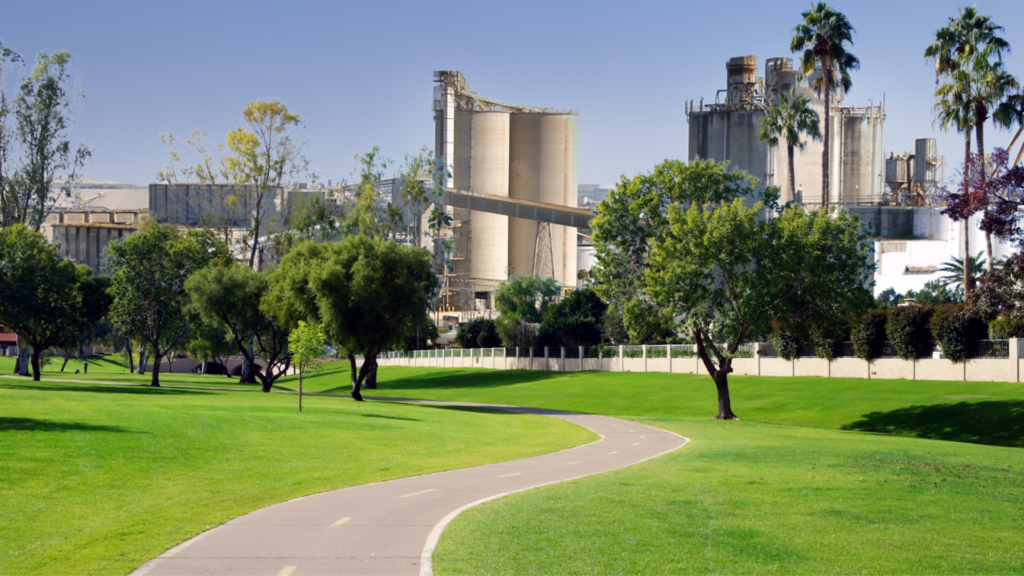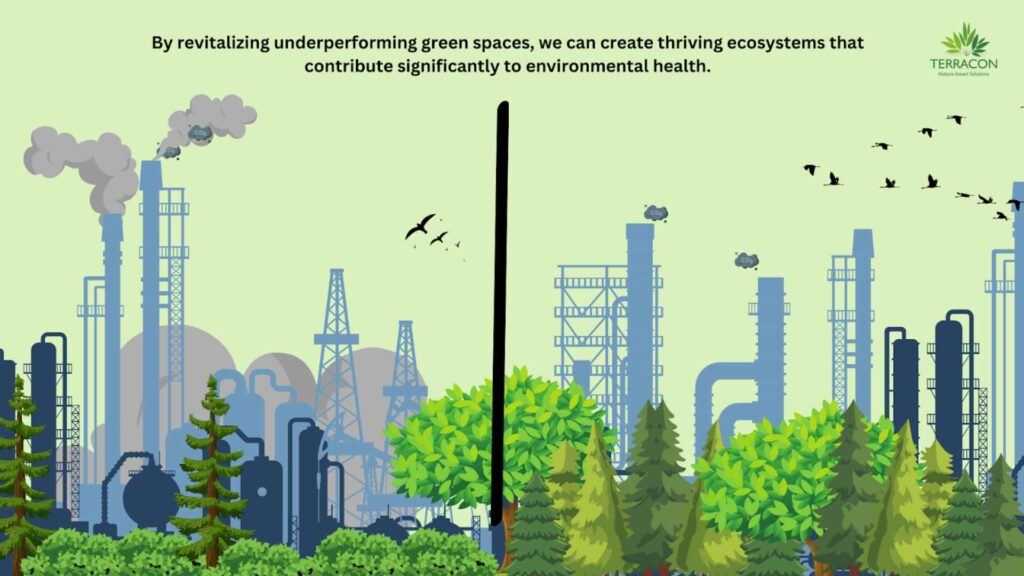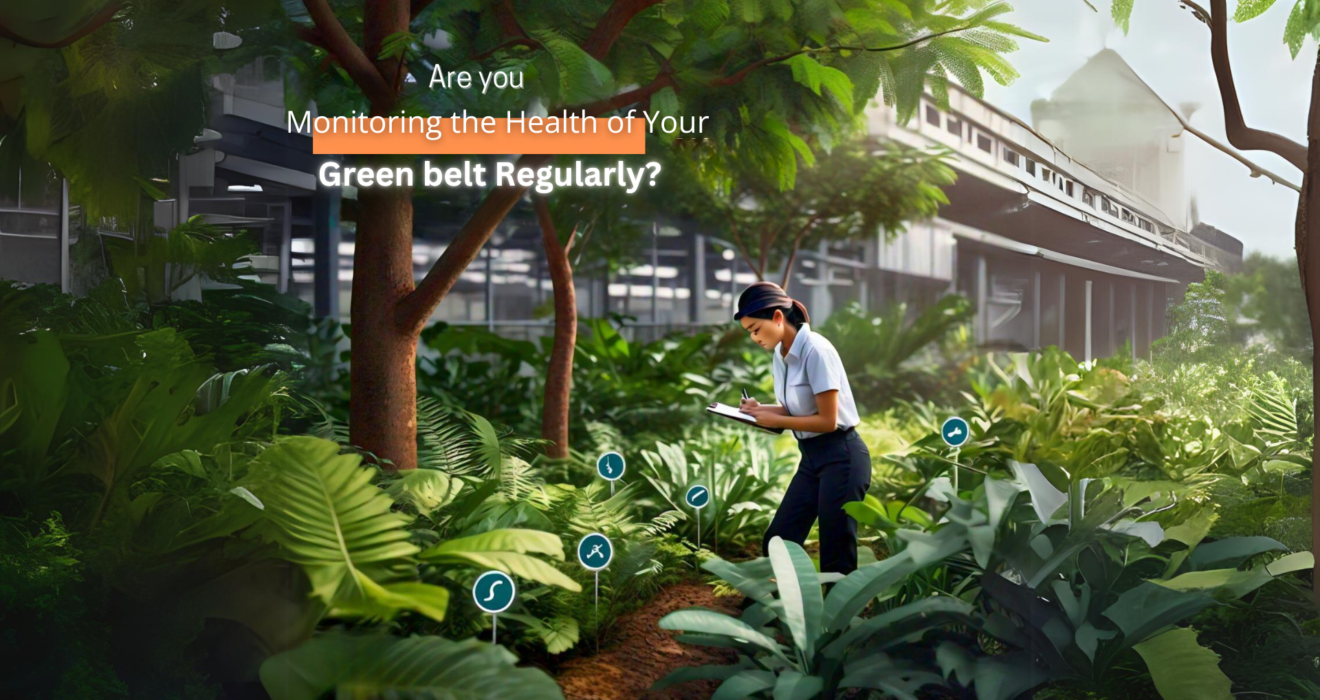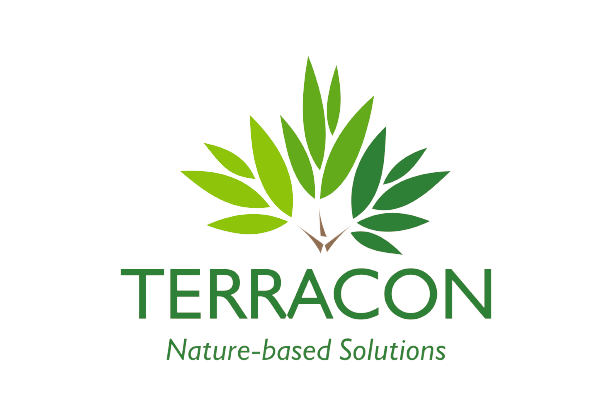
Greenbelts have long played a significant role in industrial landscapes, serving as both pollution buffers and spaces for enhancing the aesthetic appeal of typically harsh industrial environments. However, many existing greenbelts are outdated or ineffective, having been designed without considering modern environmental challenges or changing industrial dynamics. This makes it crucial to assess and modify these greenbelts to improve their functionality and appearance. A well-planned and properly maintained greenbelt can provide immense benefits by mitigating pollution, enhancing biodiversity, and promoting both environmental stewardship and corporate responsibility.
The Importance of Assessing Existing Greenbelts

A thorough assessment of greenbelts is the first step in understanding their current condition and how effectively they meet the intended environmental goals. It’s not enough to simply have trees and shrubs in place—these green spaces must be performing essential ecological functions, especially in industrial areas where pollutants such as particulate matter (PM), sulfur dioxide (SO₂), and nitrogen oxides (NOₓ) are prevalent.
Assessing a greenbelt involves several factors, including evaluating the diversity and health of the plant species, the density of the canopy, and how well the trees and shrubs are filtering out harmful pollutants. For instance, many studies highlight the critical role of species like Peepal (Ficus religiosa) and Neem (Azadirachta indica) in absorbing pollutants like SO₂ and NOₓ.

However, many existing greenbelts may lack such high-performing species, instead containing ornamental plants that contribute little to air quality improvement. Additionally, an assessment must consider the canopy cover’s ability to reduce the urban heat island effect, a common problem in industrial zones where the excessive use of concrete and machinery elevated temperatures. If trees are sparsely planted or the canopy is thin, their ability to cool the area and provide shade is compromised. Explore how nature based solution can combat air pollution.
Another aspect of assessment includes noise control. Greenbelts, if designed properly, can serve as sound barriers, reducing the noise from industrial machinery. However, this function is often neglected in older greenbelt designs, leaving industrial zones more exposed to high levels of noise pollution, which negatively impacts both workers and nearby communities. Assessing the current greenbelt for noise pollution mitigation is essential in determining whether adjustments are needed.
The Need for Modification: Updating Greenbelts for Improved Functionality
In many cases, simply assessing a greenbelt reveals that modifications are necessary. Over time, the environmental conditions surrounding industrial areas may change, and the greenbelt may no longer meet its objectives. Poor species selection, overgrown or unhealthy plants, and outdated layouts can undermine the environmental benefits that greenbelts are supposed to provide. For example, many greenbelts fail to absorb a sufficient amount of air pollutants because they contain plant species that are ill-suited to industrial environments. These plants may have been chosen for aesthetics or availability at the time but may lack the resilience or pollutant-absorbing properties needed for modern industrial challenges.

Revitalizing these greenbelts involves introducing a more strategic mix of plant species that can thrive in polluted environments. Selecting species that are resilient to industrial pollutants is crucial for their survival and effectiveness. For instance, Alstonia scholaris and Tamarindus indica are excellent choices for their high tolerance to dust and ability to filter harmful gasses. In addition, replacing weaker species with those that have demonstrated superior air purification capabilities, such as Jamun (Syzygium cumini) and Bamboo, can significantly enhance the greenbelt’s performance.
Moreover, research shows that greenbelt effectiveness can decline by up to 20% in certain areas due to poor planning or environmental degradation. This decrease in functionality not only diminishes the greenbelt’s ecological value but also increases maintenance costs for companies. By modifying the green belt, industries can restore its ability to capture pollutants, regulate temperatures, and control noise, while simultaneously reducing long-term maintenance expenditures. For example, industries located in steel or mining zones, where dust pollution is particularly high, can benefit from introducing fast-growing species like Eucalyptus and Acacia nilotica, which are capable of stabilizing the soil and absorbing large quantities of dust.

Balancing Functionality with Aesthetics
While the primary goal of a greenbelt in industrial areas is to improve environmental conditions, aesthetics should not be overlooked. A visually appealing greenbelt offers more than just a pleasant view; it contributes to the overall well-being of employees and surrounding communities. Research has consistently shown that green spaces can improve mental health, reduce stress, and even boost productivity among employees. In fact, green areas with diverse, thoughtfully arranged plant species can increase property values and enhance corporate image, promoting a sense of responsibility and commitment to sustainability.
To achieve this balance, the layout and design of greenbelts should focus on creating an inviting environment. Introducing a variety of plant species—both flowering and non-flowering—can add vibrancy to the landscape. Seasonal plants, which bloom at different times of the year, can maintain the dynamic nature of the greenbelt, ensuring it remains attractive year-round. Additionally, incorporating natural pathways and rest areas for employees to enjoy their breaks within the greenbelt can transform these areas into functional, therapeutic spaces, making them more than just pollution buffers.
For example, introducing flowering shrubs such as Hibiscus alongside trees like Mango (Mangifera indica) and Neem creates a visually diverse and engaging landscape. These plants not only improve the visual appeal but also enhance the greenbelt’s ability to filter pollutants, cool the surrounding area, and provide shade.
Long-Term Sustainability and Maintenance
Ensuring the long-term sustainability of modified greenbelts requires more than just initial design changes. Continuous maintenance and monitoring are essential to preserve both the environmental and aesthetic benefits of these spaces. Regular pruning, replanting of dead or underperforming plants, and monitoring for pests or diseases are vital steps to keep the greenbelt healthy and effective. A key aspect of this maintenance should involve organic pest control methods, reducing the need for harmful chemicals that can negatively impact the plants and the surrounding ecosystem.
Another important consideration is promoting biodiversity by introducing native species. Native plants not only thrive better in local conditions but also attract local wildlife, such as birds and pollinators, contributing to a healthier ecosystem. In many industrial areas, biodiversity has been severely affected by pollution and land degradation. By planting native species like Neem, Peepal, and Tamarind, industries can help restore ecological balance while also fulfilling their corporate social responsibility (CSR) goals.
Conclusion
Modifying existing greenbelts offers industrial facilities a unique opportunity to improve environmental outcomes while enhancing aesthetics and operational efficiency. By focusing on species selection, strategic design, and long-term sustainability, companies can transform underperforming greenbelts into valuable assets. These green spaces not only filter pollutants and control temperatures but also create visually appealing environments that boost employee morale, enhance community relations, and strengthen the corporate image.
As environmental concerns continue to rise, investing in the assessment and modification of greenbelts is not just a matter of regulatory compliance. It is a proactive step toward achieving a more sustainable future for industries, fostering environmental stewardship, and improving the well-being of employees and nearby communities. A well-designed greenbelt is more than a decorative feature—it is an essential tool in reducing the environmental impact of industrial operations and promoting a greener, healthier future.
Want to transform your industrial environment? Book a demo or speak with our experts today!
Reference
Effective design of greenbelts using mathematical models
Greenbelts for Industrial Areas
The concept of Green Belt was initially suggested in the late 19th century
Industrial air pollution by Green belt

Written by
Anjeeta Goud
Team- Business development and Strategy
Terracon Ecotech




